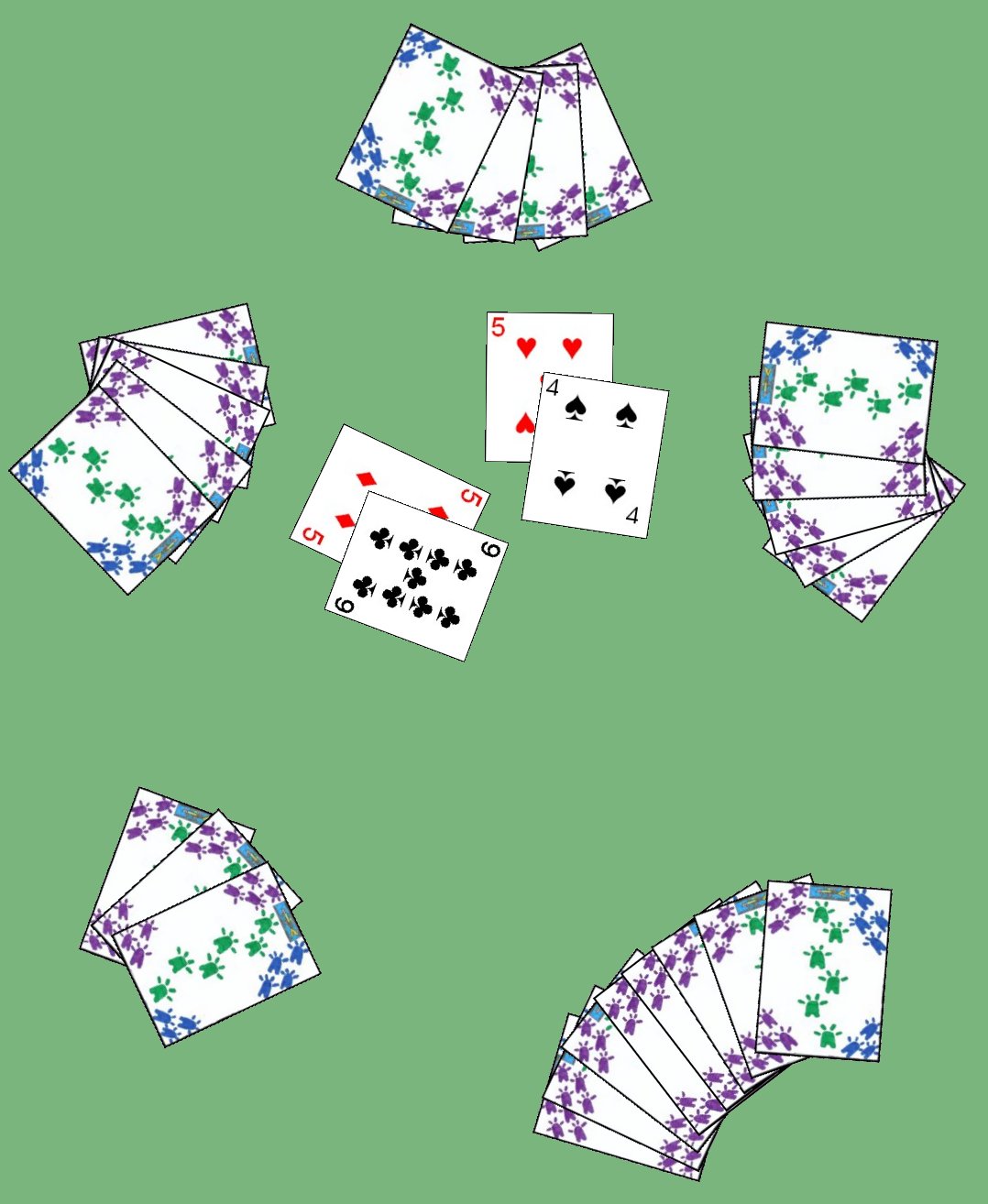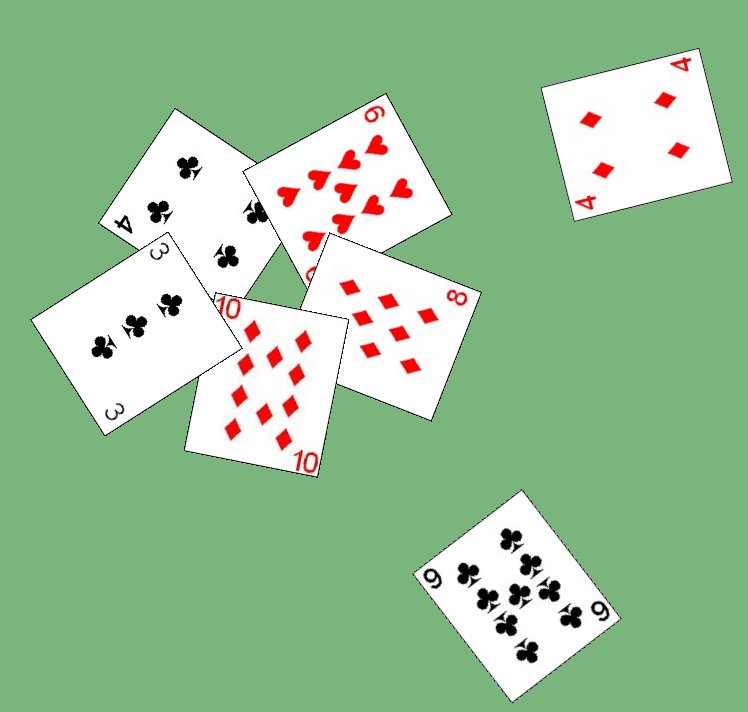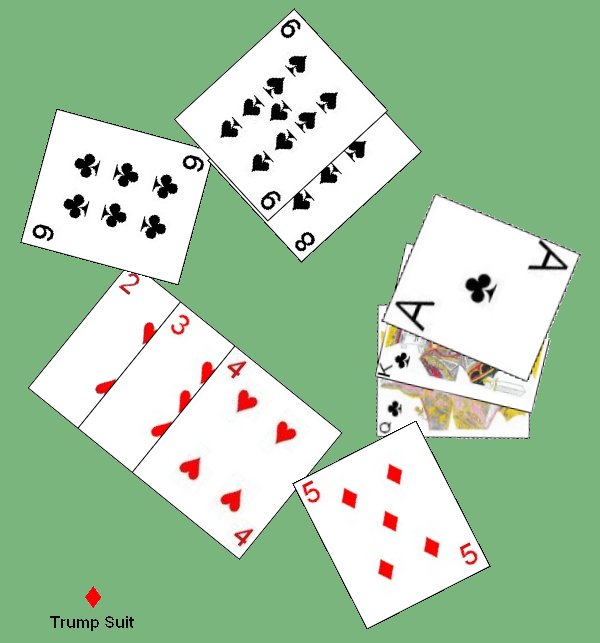
How to Play Skitgubbe |
 |
| In this example, the original trick played is tied with each of the two players playing a five, thus each player then must play a second trick to determine the winner. In this case the nine, being the higher card wins the trick. |
 The first phase is played out in a series of tricks. However, as opposed to standard Skitgubbe, all players participate in each trick. The player to the immediate left of the dealer leads the first card to the first trick.
When leading to a trick, at the players option, he may instead play the top card from the stock instead. To do this he would simply take and turn over the top card of the stock and place it in the middle of the table to begin the trick.
The first phase is played out in a series of tricks. However, as opposed to standard Skitgubbe, all players participate in each trick. The player to the immediate left of the dealer leads the first card to the first trick.
When leading to a trick, at the players option, he may instead play the top card from the stock instead. To do this he would simply take and turn over the top card of the stock and place it in the middle of the table to begin the trick.
 Once the cards have been redistributed as necessary, the second phase of the game will begin. The second phase is also played rather differently than in standard Skitgubbe, although the goal is the same, for a player to play all his cards and drop from the game as quickly as possible.
Once the cards have been redistributed as necessary, the second phase of the game will begin. The second phase is also played rather differently than in standard Skitgubbe, although the goal is the same, for a player to play all his cards and drop from the game as quickly as possible.